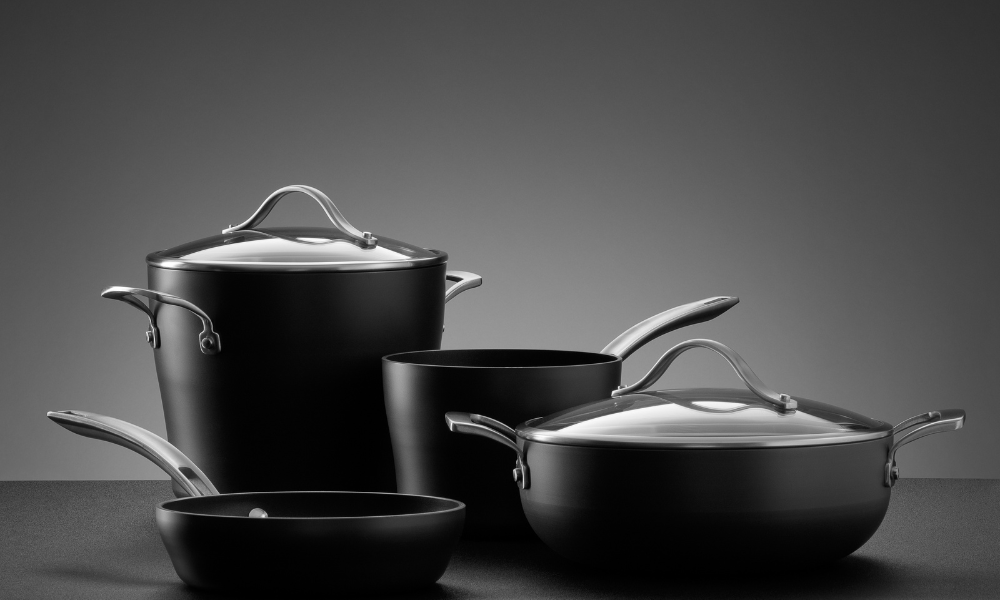Whether you’re a budding chef or a seasoned home cook, understanding the basics of cookware is crucial for mastering culinary arts. Cookware comprises various pots and pans made from different materials like stainless steel, cast iron, and non-stick coatings, each offering unique benefits for cooking. This guide will explore the history, types, and care of cookware, helping you make informed choices to enhance your cooking experience. Join us as we delve into everything you need to know about this fundamental kitchen gear.
1. History of Cookware
The history of cookware is as old as civilization itself, reflecting human ingenuity in cooking methods. From the clay pots of ancient Mesopotamia to the copper cookware of the Romans, each era brought its own innovations that enhanced culinary techniques. In the 20th century, the introduction of materials like stainless steel and non-stick coatings revolutionized home cooking, offering convenience and versatility. These key developments have shaped the modern cooking utensil we rely on today, making it easier to prepare a wide range of dishes with precision and efficiency.
2. Types of Cookware
Cookware comes in various materials, each with unique characteristics that suit different cooking styles. Stainless steel is durable and resistant to corrosion, making it a versatile choice for many kitchens, though it may require proper preheating to prevent sticking.
Cast iron, known for its excellent heat retention, is ideal for slow cooking but requires regular seasoning to maintain its non-stick surface. Aluminum cookware is lightweight and provides even heat distribution, though it can be prone to warping and may react with acidic foods. Copper cooking utensil offers superior heat control but needs regular polishing to prevent tarnishing.
Ceramic cookware is non-reactive and visually appealing, offering a naturally non-stick surface, though it can be prone to chipping. Non-stick surfaces, popular for easy food release, simplify cleanup but may degrade over time with high heat or metal utensil use. Understanding these materials helps in selecting the right cooking utensil for your kitchen.
3. Cookware Components
Cookware is made up of several essential components that each serve a specific purpose in the kitchen. Pots and pans are the core pieces, designed for boiling, simmering, frying, and sautéing. Lids help trap heat and moisture, enhancing cooking efficiency and flavor. Handles, often ergonomically designed, provide a safe grip and are typically made from heat-resistant materials.
Inserts, such as steamer baskets, add versatility to your cookware by enabling different cooking methods in the same pot. Specialized cooking utensil pieces, like Dutch ovens, woks, and griddles, cater to specific culinary needs, offering unique features that make them indispensable for certain recipes. Understanding these components helps you make informed choices that suit your cooking style.
4. Choosing the Right Cookware
Choosing the right cookware is crucial for achieving the best cooking results. Key factors to consider include heat conductivity, which determines how evenly your cooking utensil heats; materials like copper and aluminum excel in this area.
Durability is also essential, as cookware made from stainless steel or cast iron tends to last longer, even with frequent use. Maintenance and care requirements vary, with non-stick and ceramic surfaces being easier to clean but requiring more gentle handling.
It’s important to ensure compatibility with your heat source, whether it’s induction, gas, or electric, as not all cooking utensils work with every stove type. Matching cookware to your cooking needs, such as selecting heavy-bottomed pans for searing or non-stick options for delicate foods, can significantly enhance your kitchen experience.
5. Care and Maintenance
Proper care and maintenance of cookware extend its lifespan and ensure optimal performance. Different materials require specific cleaning methods. For stainless steel, avoid harsh abrasives and opt for a gentle scrub with warm, soapy water to prevent scratches.
Cast iron should be seasoned regularly to maintain its non-stick surface, and any rust can be removed with a salt scrub followed by re-seasoning. Non-stick pans should be cleaned with soft sponges and mild detergent to avoid damaging the coating. Then, Address common issues like burnt-on food by soaking the cooking utensil and using non-abrasive tools to clean.
6. Innovations in Cookware
Recent innovations in cookware have transformed how we cook, offering enhanced performance and convenience. Advances in materials, such as tri-ply construction combining stainless steel, aluminum, and copper, provide superior heat distribution and durability.
Non-stick surfaces have also evolved, with ceramic coatings offering a healthier, chemical-free alternative to traditional options. As sustainability becomes more important, eco-friendly cooking utensils made from recycled materials and energy-efficient designs are gaining popularity.
Future trends point towards smart cookware with embedded technology for precise temperature control and monitoring, making cooking more efficient and environmentally friendly.
Conclusion
Understanding the various aspects of cookware—from the types of materials and essential components to proper care and the latest innovations—can significantly enhance your cooking experience. By selecting the right cooking utensil that suits your needs and maintaining it well, you not only improve the quality of your meals but also ensure your kitchen tools last longer. As kitchen ware technology continues to evolve, staying informed about new trends and eco-friendly options will help you make choices that align with both your culinary goals and environmental values.





